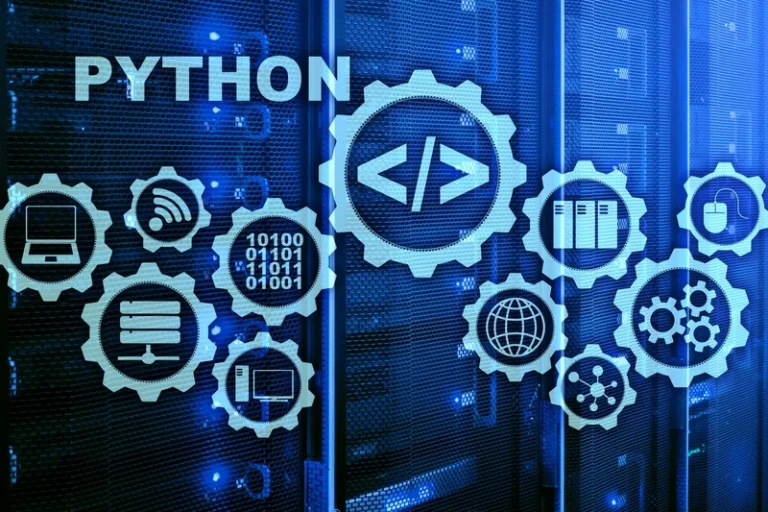Different models arrange the SDLC phases in varying chronological order to optimize the development cycle. The development team combines automation and manual testing to check the software for bugs. Quality analysis includes testing the software for errors and checking if it meets customer requirements. Because many teams immediately test the code they write, the testing phase often runs parallel to the development phase.
It’s when you gather the team to brainstorm, set goals, and identify risks. At this stage, the team will work together to devise a set of business goals, requirements, specifications, and any high-level risks that might hinder the project’s success. The software development lifecycle, or SDLC, is a systematic process for building software. It’s composed of several methodical stages that prioritize increasing system efficiencies, proper planning and rigorous testing. This enables organizations to produce the highest quality software in the shortest possible amount of time, all while minimizing costs. DevSecOps is the practice of integrating security testing at every stage of the software development process.
Software developer careers and job outlook
Besides, if a team follows a system development life cycle SDLC, it’s mentally more oriented
on results. It means that there will be less wasted effort, so a client can expect better
ROI. For instance, if creating solid documentation is important for a client, it’s better to
choose a waterfall or V-shape conceptual model. In case a priority is fast getting to the
market, then a RAD or agile SDLC methodologies will be a more suitable option.
Global IT ERP Compliance Manager in Baltimore – BioBuzz
Global IT ERP Compliance Manager in Baltimore.
Posted: Tue, 03 Oct 2023 12:25:35 GMT [source]
The deployment phase includes several tasks to move the latest build copy to the production environment, such as packaging, environment configuration, and installation. The project manager is the overall control agent for a strong SDLC process. Following each phase of a system development life cycle the team and project manager may establish a baseline or milestones in the process. The baseline may include start date, end date, phase/stage duration, and budget data. In conclusion, we now know that Software Development Life Cycle (SDLC) software engineering is an important framework for the better and more structured development of optimized software programs. In a world full of rapid evolution in technology, SDLC phases plays a crucial role in enabling some good and innovative solutions for helping users and organizations.
Strategic Planning for/of Information Systems
You can address security in SDLC following DevSecOps practices and conducting security assessments during the entire SDLC process. The iterative process suggests that teams begin software development with a small subset of requirements. Then, they iteratively enhance versions over time until the complete software is ready for production.
After detailed testing, the conclusive product is released in phases as per the organization’s strategy. If it performs well, the organization sends out the product as a whole. After retrieving beneficial feedback, the company releases it as it is or with auxiliary improvements to make it further helpful for the customers. While the Waterfall model is one of the classic SDLC models, there are other iterative and incremental models, like Agile, Scrum, and DevOps, which emphasize flexibility and continuous improvement throughout the development process. These methodologies allow for more frequent interactions with stakeholders and adaptability to changing requirements. Once you’ve got your design plans in front of you, it’s time for wireframing and mockups.
Software Design
When teams have clarity into the work getting done, there’s no telling how much more they can accomplish in the same amount of time. Empower your people to go above and beyond with a flexible platform designed to match the needs of your team — and adapt as those needs change. Scarce resources as developers are tied up, which could slow down other projects.

This phase is the product of the last two, like inputs from the customer and requirement gathering. This is accomplished through “SRS”- Software Requirement Specification document which contains all the product requirements to be constructed and developed during the project life cycle. Each of the testing steps in the development/configuration phase is tested against a step in the design phase. This ensures that the objective of the system is met and that it is fit for purpose. The third theme includes ways to determine the processes (actions) necessary to produce the results as defined by the requirements of the system. It is difficult to incorporate changes or customers’ feedback since the project has to go back to one or more previous phases, leading teams to become risk-averse.
The stages of SDLC are as follows:
SDLC or the Software Development Life Cycle is a process that produces software with the highest quality and lowest cost in the shortest time possible. SDLC provides a well-structured flow of phases that help an organization to quickly produce high-quality software which is well-tested and ready for production use. When teams develop software, they https://www.globalcloudteam.com/ code and test on a different copy of the software than the one that the users have access to. The software that customers use is called production, while other copies are said to be in the build environment, or testing environment. In the design phase, software engineers analyze requirements and identify the best solutions to create the software.

Apart from
covering various technical aspects regarding system development, SDLC is efficient for
process development, change management, or user experience. In most use cases, a system is an IT technology such as hardware and software. Project and program managers typically take part in SDLC, along with system and software engineers, development teams systems development life cycle (sdlc) and end-users. Aligning the development team and the security team is a best practice that ensures security measures are built into the various phases of the system development life cycle. In addition, governance and regulations have found their way into technology, and stringent requirements for data integrity impact the team developing technology systems.
Management and control
In the waterfall model, once a phase seems to be completed, it cannot be changed, and due to this less flexible nature, the waterfall model is not in practice anymore. This stage involves deploying the developed system into the production environment. This includes activities such as system installation, data migration, training end-users, and configuring necessary infrastructure. Implementation requires careful planning and coordination to minimize disruptions and ensure a smooth transition from the old system to the new one. Various SDLC methodologies have been developed to guide the processes involved, including the original SDLC method, the Waterfall model.
- Baselines[clarification needed] are established after four of the five phases of the SDLC, and are critical to the iterative nature of the model.[21] Baselines become milestones.
- At this stage, the goal is to deploy the software to the production environment so users can start using the product.
- A configuration management system shall be implemented during development and implementation.
- This approach also ensures that the provider can constantly measure itself to interpret the requirements of – and deliver the best solution to – the client.
- Many of these models are shared with the development of software, such as waterfall or agile.
- Other key characteristics of a waterfall approach usually include the fixed price and strict
deadlines.
In those days, teams were small, centralized, and users were ‘less’ demanding. This type of scenario meant that there was not a true need for refined methodologies to drive the life cycle of system development. However, technology has evolved, systems have become increasingly complex, and users have become accustomed to well-functioning technology. Models and frameworks have been developed to guide companies through an organized system development life cycle. Today, the traditional approaches to technology system development have been adjusted to meet the ever-changing, complex needs of each unique organization and their users.
Work breakdown structured organization
Other SDLC models include rapid application development (RAD), joint application development (JAD), the fountain model, the spiral model, build and fix, and synchronize-and-stabilize. SDLC is also an abbreviation for Synchronous Data Link Control and software development life cycle. Software development life cycle is a very similar process to systems development life cycle, but it focuses exclusively on the development life cycle of software. It then creates the software through the stages of analysis, planning, design, development, testing, and deployment. By anticipating costly mistakes like failing to ask the end-user or client for feedback, SLDC can eliminate redundant rework and after-the-fact fixes.
